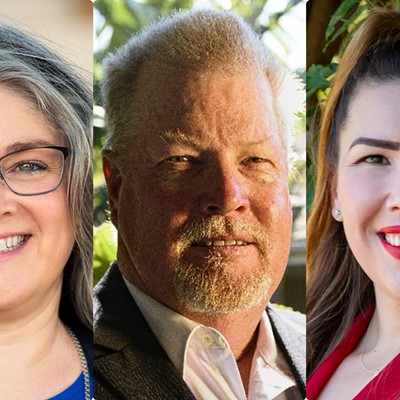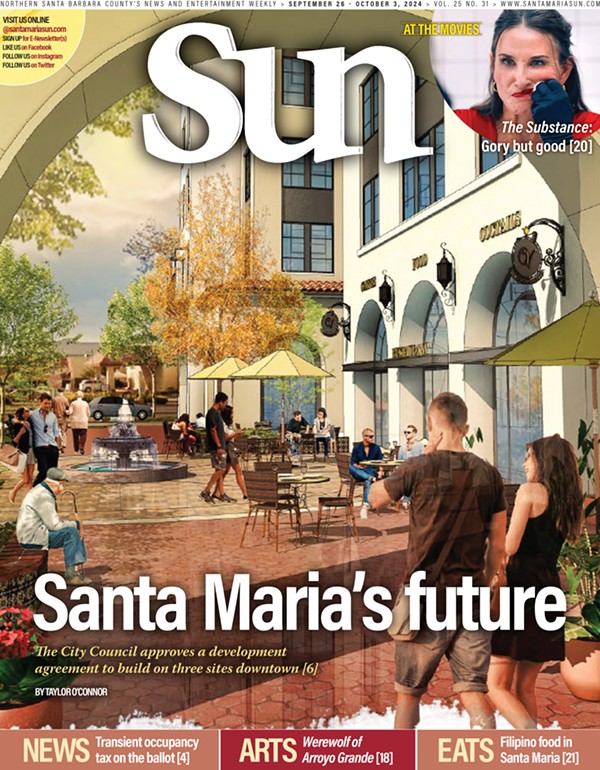While Betsy Jones leads her students through multiplication charts, English lessons, and science experiments, a special education co-teacher goes around the room, making sure students with disabilities understand and are keeping up with their peers.
“I am a general education teacher and I co-teach with her all day long,” the fifth grade Liberty Elementary School teacher said. “One teacher is always teaching while the other is constantly assisting the students in the class. It’s really a perfect world.”

Jones explained that this co-teaching model is the first of its kind at Liberty, and one of the many new inclusion models being used as the Santa Maria-Bonita School District complies with state and federal laws requiring students with individualized education plans (IEPs) to integrate into general education classrooms.
“It has been wonderful. There’s more peer relationships and friendships; more empathy and respect between the students, and [they’re] making meaningful relationships,” Jones said. “There’s advantages for all of the students to be in an inclusion class.”
This year, eight of her 28 students have IEPs, and together, the teachers running the classroom have 19 years of experience, two master’s degrees, and have received training and support from the district to smoothly transition into this new model. Before, students with disabilities were sent to a different school in the district—away from peers in their neighborhood and from a beneficial learning environment, she said.
“Personally I don’t like the segregation. I think all of the kids should know how to act, and [the] high expectations in general education classes is beneficial [for students with disabilities] to see how their peers respond and act, so they know how they should be acting—or it gives them a model to look to,” Jones said.
Not only will students with special needs accelerate, students in general education can learn about invisible disabilities, develop empathy, and develop leadership skills to help their peers with IEPs, Jones added.
“The kids seem happy with the change. I’m fighting for it. ... Liberty Elementary is kind of trying to be ahead of the game and see how it works,” she said.
Amid these changes, some parents remain concerned for their children’s progress without a special education program. Stacey’s daughter has been enrolled in a mild-to-moderate program where they teach everything learned in general education, but with only eight to 10 kids in a classroom. This year, her 7-year-old is now in a general education classroom with one part-time aide.
Stacey—who asked the Sun to change her name—is worried about the teacher meeting her daughter’s needs without specialization in special education as well as other kids’ reactions to her behavior.
“We actually had an incident on the first day of school. The teacher instructed the students to do a math worksheet, and my daughter wasn’t following along and she was having a hard time. There was no aide there,” she said. “My daughter was kind of left there until she found something else to do. It’s heartbreaking as a parent because who will be there when she does have a problem? She can’t stop her lesson for one student when she has 20 students.”
Outside of academics, Stacey added, her daughter said there was an incident during recess where kids didn’t have a lot of patience when waiting for her to take her turn on playground equipment.
“She has difficulties and balancing issues. She takes her time doing a lot of things, where my 3-year-old is much quicker than my 7-year-old; you can only imagine how much quicker other 7-year-olds are,” she said. “Other than that, she loves school and is so excited to go every day.”
Although Stacey said she understands the change is a response to new laws, she has advocated that special education programming return to the district to benefit the kids and attend to their needs. She’s frustrated with the removal of her daughter’s previous program.
“There was an IEP [meeting] last year at the end of the school year in May, and I expressed all my concerns. I don’t agree with her being in general education, but I don’t agree with her being in severe special education. Ever since school started, I have been going back and forth with the special education office and her school,” she said.
Special Education Director Erik Thompson acknowledged that the adjustment will present challenges at first, but the integration will benefit both general and special education students in the long run.
“They are all general education students first, just some receive special education services. It’s different—the old way was general education, special education; it just wasn’t an efficient way to educate our students,” he said. “People can worry about how this affects the other students, but the research out there states there is not a negative effect of the neurotypical students in an inclusion setting, and in many cases there are positive outcomes.”
More than 50 years of research backs up inclusionary models—like Santa Maria-Bonita’s—and supports the Individuals with Disabilities Act, the federal law that requires states to integrate students with special needs into general education classrooms, he said.
“[California] is in the bottom 10 for providing inclusive opportunities for students and the highest rates for segregated students in the country. The state’s recognized this and asked us to comply with the law and provide better opportunities for students,” Thompson said.
The law itself was originally written in 1975 as the Americans with Disabilities Act, stating that the least restrictive environment was the most beneficial for students with disabilities. The law was reauthorized in 2004 with the specific language that students should be in general education first and only be removed if they cannot make progress, Thompson explained. Other states have made progress, but the Golden State remained behind. In response, the California Legislature pushed forward SB 1113 in the 2021-22 legislative session—which is geared toward improving inclusive practices in schools.
“Some of the interesting research out there is that students with disabilities actually get more instruction in the general education classroom than in the special education classroom even though special education has smaller sizes,” Thompson explained. “The more time they are away from general education, the gap can widen. We want to give them access to inclusive opportunities as soon as possible. We look at every student at each of their IEP meetings.”
To help the district navigate through the change, Santa Maria-Bonita’s special education department revamped its own programs by adding special education teachers, language pathologists, multilingual specialists, psychologists, and behavioral analysts along with teacher support and training. Each classroom will look a little different, depending on the teachers’ decisions: It could look like Jones’ co-teaching classroom, or it could be a teacher and a special education aide running small groups. Ultimately, students will receive the same support in their neighborhood school instead of getting sent to specific schools away from their peers. There will still be special day classes, for those who do require a higher level of support based on the individual’s needs, and opportunities for reevaluation.
“Special education is one of the last forms of legal segregation in this country. We know ‘separate but equal’ wasn’t equal, and this has made me ponder along [those] lines: Separate but special, but special isn’t special. What is special is our students, it is our teachers, it is not a segregated, separate learning environment,” Thompson said.
Staff Writer Taylor O’Connor can be reached at [email protected].










